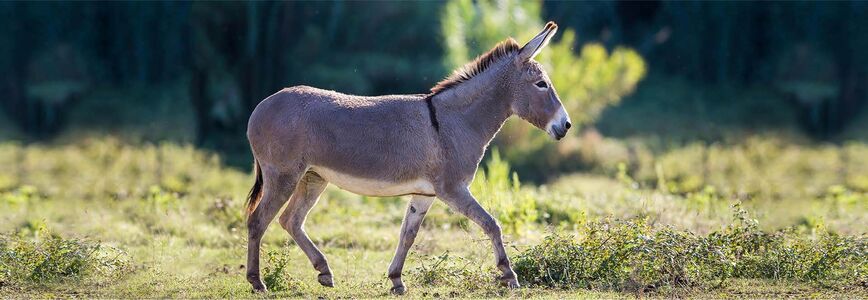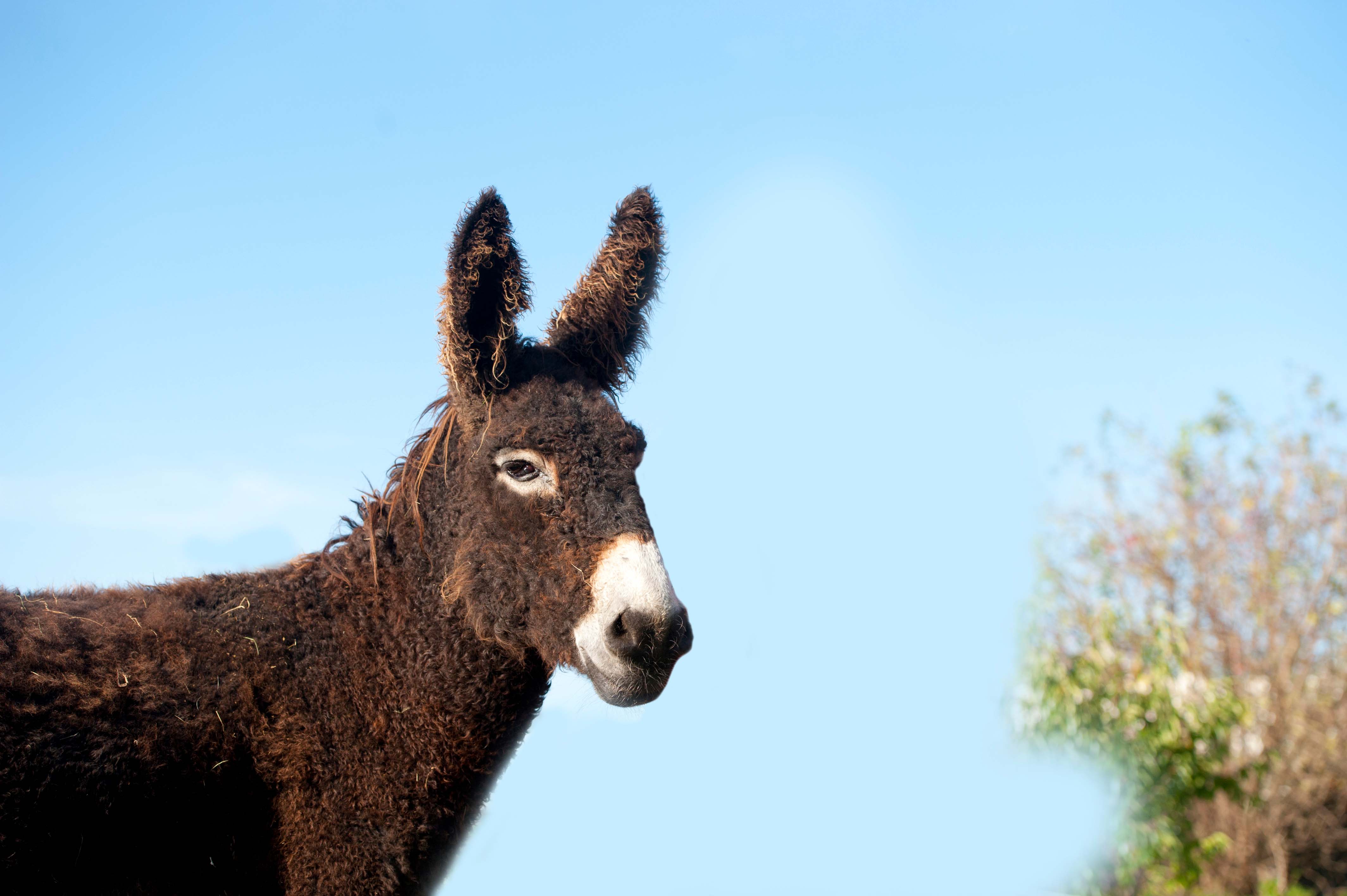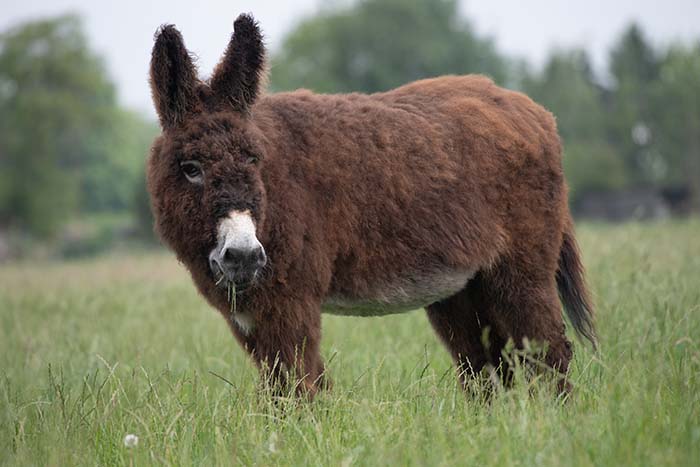
They are loyal, cuddly and highly intelligent: Thousands of years ago, donkeys have already been companions to the ancient Egyptian people.
Breed:
Donkey
Group:
African Donkey
Height at the withers:
90 - 160 cm
Appearance:
long ears, standing-up mane, often light colouring on the belly and zebra-like patterns on the legs, tassel-like tail, crosswise stripes on the shouldes
Colour of coat:
grey, brown, black, rarely also white
Character:
intelligent, very social, sensitive, brave
Origin:
Africa
Prevalence:
worldwide
Suited for:
animal-based therapy, protecting sheep herds, landscaping
Did you know? A cross between a horse and a donkey is called a hinny. A hinny has a horse stallion as a father and a donkey mare as a mother. For the so-called mule, it’s the other way around: They have a horse mare mother and a donkey stallion father. However, hinnies and mules are not able to procreate.

Not at all stubborn: donkeys.
Domestic donkeys are extraordinary members of the horse family. They originate from the wild African donkey and have been domesticated for thousands of years. They were mainly used for riding and as pack animals until they were gradually replaced by horses. However, their robust nature and sure-footedness still makes them a loyal companion for humans today. In different ages, it was usually poor people who could only afford a sturdy donkey as a working animal – instead of an elegant horse. This led to donkeys being far less appreciated than horses, even today.
Their reputation as being stubborn also added to this perception. This, however, is based on a misunderstanding: When faced with danger, unlike horses, donkeys don’t run away but stay put. They take a moment to decide whether to run or to attack. If necessary, donkeys actually attack if they are threatened. Although it often doesn’t seem like it, donkeys are under great pressure in situations where they have to make fight-or-flight decisions. And if the person who is guiding the donkey tries to pull or move it along, this creates even more pressure for the animal. Hence, it will not move from the spot. As a conclusion, donkeys aren’t stubborn – but dealing with them requires a lot of patience and sensitivity. However, once you gain a donkey’s trust, it will become a loyal friend. And it will be motivated and eager to learn when working together. The intelligent animals also like to show off their talent for comedy – which a number of donkeys have already proven in the show.

There are more than 30 donkey breeds in the world.
Donkeys are closely related to horses, however they differ in many respects. Donkeys don’t have a lush tail, their tail has a tassel-like tip. The short standing-up mane and the so-called eel line that runs across the back are also typical. Their calls are much louder than horses whinnying, which is why they can communicate across distances of up to three kilometres. In order to hear these sounds from far away, donkeys have longer ears than horses that give them their particularly endearing look. Most of their grey coat is not water-repelling, which is why donkeys need to seek shelter in a stable when it rains. They also eat different food to horses: Donkeys have a very efficient metabolism. They should not eat too much grain and juicy grass, as this could cause diseases and overweight. Instead, they need a lot of woodchips, for example branches and bark, hay and straw.
There are more than 30 different types of donkeys in the world. However, the majority of domestic donkeys cannot be attributed to any of these breeds, which is why they are only divided into miniature donkeys, regular donkeys and large donkeys. The respective donkey breeds only have few animals left. Breeding associations are striving to save them from extinction.